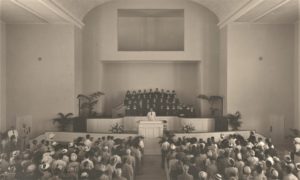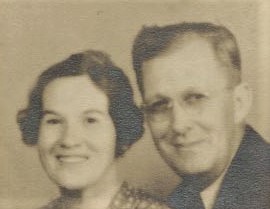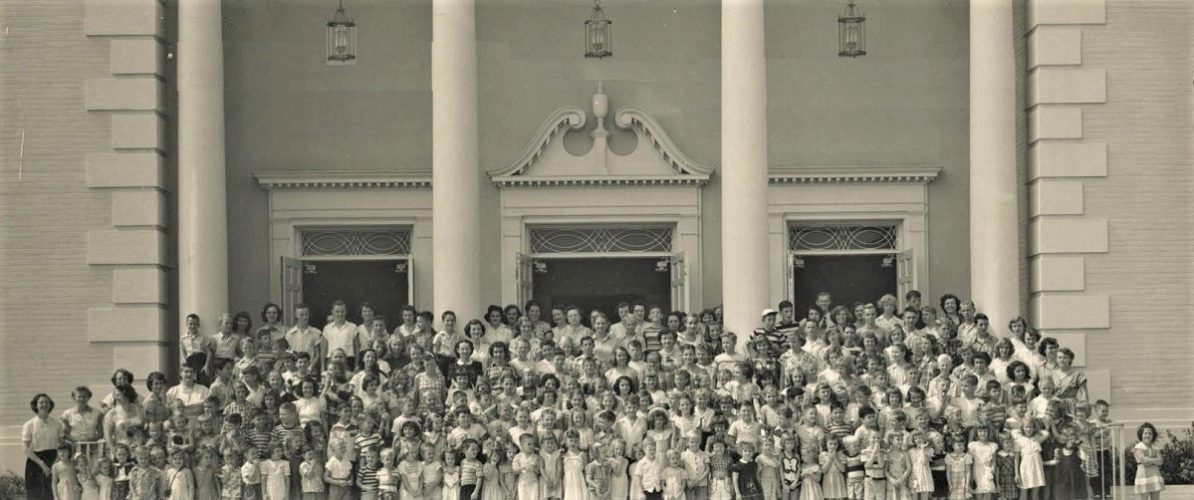The Presbyterian Church in America (PCA) has its origin predominately in the southern states. You cannot get any farther south than Key West, Florida, but anyone that has driven down the peninsula knows life in the lower state is different from that in the panhandle and the central region. South Florida is a haven for retirees from colder climates as well as a multi-ethnic mix of peoples from Central and South America and the Caribbean islands. Not only does one hear English, but also Spanish, Portuguese, and Creole (language of Haitian immigrants). What is likely not known is the importance of the churches of South Florida Presbytery to the PCA and particularly the influence of one church in Miami.
 In September 2019 the property on Southwest 8th Street in Miami, Florida, formerly used by Shenandoah Presbyterian Church was demolished. The congregation had been organized in 1927 but was dissolved by South Florida Presbytery of the PCA in 1998. Dissolution resulted from difficulty adapting to ministry in the dramatically changed parish because over the years Spanish speakers moved into what became the Calle Ocho community. Shenandoah was organized under the ministry of Rev. Daniel Iverson as Miami was rebuilding following a devastating hurricane in 1926 that killed 372, injured over 6,000, and made portions of the rapidly growing city rubble. Times of death and destruction can be used by the Holy Spirit to show individuals the frailty of life, lead them to question its meaning, and direct them to comprehend the effects of sin and the fall not only in the creation with its whirlwinds but also within themselves. It was a prime time for Pastor Iverson to begin a congregation in a rented facility that grew to fill in later years the impressive property that was razed (an earlier church burned down). He resigned from Shenandoah in 1951 but it appears he continued ministry as a presbytery evangelist. Shenandoah started mission churches during Iverson’s ministry. He conducted a home Bible Study that seeded First Church, Miami Springs, with him participating in founding LeJeune Presbyterian Church and another church in Alta Vista. He was the organizing pastor of Key Biscayne Presbyterian Church beginning services in a restaurant called the Jamaica Inn with organization taking place June 19, 1955. Daniel Iverson died at the age of 86 on January 3, 1977 in Hendersonville, North Carolina.
In September 2019 the property on Southwest 8th Street in Miami, Florida, formerly used by Shenandoah Presbyterian Church was demolished. The congregation had been organized in 1927 but was dissolved by South Florida Presbytery of the PCA in 1998. Dissolution resulted from difficulty adapting to ministry in the dramatically changed parish because over the years Spanish speakers moved into what became the Calle Ocho community. Shenandoah was organized under the ministry of Rev. Daniel Iverson as Miami was rebuilding following a devastating hurricane in 1926 that killed 372, injured over 6,000, and made portions of the rapidly growing city rubble. Times of death and destruction can be used by the Holy Spirit to show individuals the frailty of life, lead them to question its meaning, and direct them to comprehend the effects of sin and the fall not only in the creation with its whirlwinds but also within themselves. It was a prime time for Pastor Iverson to begin a congregation in a rented facility that grew to fill in later years the impressive property that was razed (an earlier church burned down). He resigned from Shenandoah in 1951 but it appears he continued ministry as a presbytery evangelist. Shenandoah started mission churches during Iverson’s ministry. He conducted a home Bible Study that seeded First Church, Miami Springs, with him participating in founding LeJeune Presbyterian Church and another church in Alta Vista. He was the organizing pastor of Key Biscayne Presbyterian Church beginning services in a restaurant called the Jamaica Inn with organization taking place June 19, 1955. Daniel Iverson died at the age of 86 on January 3, 1977 in Hendersonville, North Carolina.
 The process for founding the PCA’s Gold Coast Presbytery (now South Florida Presbytery) began Sunday, June 3, 1973. In an interview reported the next day in The Miami News article, “Presbyterian Churches Here Vote to Quit,” Pastor Robert Ostenson of Granada Church in Coral Gables said that the first five churches had decided to leave and form a new denomination with his own congregation garnering a unanimous vote of 737 communicant members in attendance. Religion editor Bob Wilcox went on to comment that of particular concern for the departing churches was the “liberal-conservative rift” with the liberals wanting to “temper” the teaching of the Westminster Confession of Faith regarding “the absolute sovereignty of God” and its affirmation of “the infallible word of God.” Up for consideration at the impending General Assembly of the PCUS (the denomination from which the churches were separating) were revisions that would weaken the system of doctrine in the Confession. Note here that events leading to the founding of the Orthodox Presbyterian Church in 1936 had included concerns about revising the Confession by the PCUSA. As other churches in South Florida voted to leave, the tally was ten by June 5. In December when the National Presbyterian Church (renamed PCA the next year) met for its First General Assembly two other churches had been added with twelve making up what became South Florida Presbytery. The new presbytery held its first meeting June 26, 1973 with Rev. Ross Bair moderator and Rev. Donald Esty stated clerk. The churches included: Covenant in Ft. Lauderdale, Coral Springs (Now First Church) in Coral Springs, Spanish River in Boca Raton, Seacrest Boulevard in Delray Beach, Lake Osborne in Lake Worth, Faith Church in Wauchula, and in the Miami area were Granada, Kendall, Trinity, Le Jeune, Pinelands, and Shenandoah. The total communicant membership of the presbytery was nearly 6,000 with Granada the largest congregation having 1,413. Other churches were interested in leaving the PCUS but in some cases could not do so because they had loans from the denomination that would come due if they left.
The process for founding the PCA’s Gold Coast Presbytery (now South Florida Presbytery) began Sunday, June 3, 1973. In an interview reported the next day in The Miami News article, “Presbyterian Churches Here Vote to Quit,” Pastor Robert Ostenson of Granada Church in Coral Gables said that the first five churches had decided to leave and form a new denomination with his own congregation garnering a unanimous vote of 737 communicant members in attendance. Religion editor Bob Wilcox went on to comment that of particular concern for the departing churches was the “liberal-conservative rift” with the liberals wanting to “temper” the teaching of the Westminster Confession of Faith regarding “the absolute sovereignty of God” and its affirmation of “the infallible word of God.” Up for consideration at the impending General Assembly of the PCUS (the denomination from which the churches were separating) were revisions that would weaken the system of doctrine in the Confession. Note here that events leading to the founding of the Orthodox Presbyterian Church in 1936 had included concerns about revising the Confession by the PCUSA. As other churches in South Florida voted to leave, the tally was ten by June 5. In December when the National Presbyterian Church (renamed PCA the next year) met for its First General Assembly two other churches had been added with twelve making up what became South Florida Presbytery. The new presbytery held its first meeting June 26, 1973 with Rev. Ross Bair moderator and Rev. Donald Esty stated clerk. The churches included: Covenant in Ft. Lauderdale, Coral Springs (Now First Church) in Coral Springs, Spanish River in Boca Raton, Seacrest Boulevard in Delray Beach, Lake Osborne in Lake Worth, Faith Church in Wauchula, and in the Miami area were Granada, Kendall, Trinity, Le Jeune, Pinelands, and Shenandoah. The total communicant membership of the presbytery was nearly 6,000 with Granada the largest congregation having 1,413. Other churches were interested in leaving the PCUS but in some cases could not do so because they had loans from the denomination that would come due if they left.
The Miami Herald, June 23, 1973, provided information about the churches separation from the PCUS in a three part article. The first summarized events thus far and presented the theological and economic aspects of the division. The second section provided four reasons for remaining with the PCUS as expressed by Rev. John Huffman, and the third section stated four reasons for leaving. Representing the argument for leaving was Ruling Elder Kenneth Keyes of Shenandoah Church.
The first reason to leave included theological topics such as ministers being ordained that denied the virgin birth. This theological reason may be familiar for some readers since J. Gresham Machen wrote a book on the virgin birth as he faced similar circumstances with the PCUSA in the 1920s. Another issue addressed by Keyes was ministers holding to universal salvation and denying the necessity of redemption through Christ. He also criticized “Ethical humanism and biblical higher criticism which minimize the authority of the Word of God.”
The second reason was an economic one. Keyes was concerned that if churches wanting to leave the denomination waited too long they might not be able to keep their property because of a proposed merger between the PCUS and the UPCUSA (PCUSA). If this union was accomplished Keyes and others believed church properties would be held by the denomination and not the congregation because it was the policy of the UPCUSA.
Keyes does not mention the spirituality of the church as he expressed the third reason, but it is the appropriate category. He was concerned about “pronouncements and social action [that] presents serious questions of constitutionality.” That is, the work of the church is concerned with spiritual issues, and he was troubled that increasing involvement of the denomination in political and social issues would detract from gospel ministry.
The fourth reason for separation was his belief that educational materials published by the denomination presented nonbiblical concepts on sex, marital fidelity, abortion, divorce, remarriage, and drugs. He believed that “at the grass-roots level” the PCUS was committed to “historic Christianity,” but contended that those in control of the denomination were out of touch with the majority of church members. How often do church members and citizens of nations express concern that their leaders are out of touch with the people? For Elder Keyes, the only alternative was a new church.
In this semi-centennial year of the PCA it is good to remember those who worked to establish a confessional denomination dedicated to the infallible Word and the Great Commission. Of the original churches in South Florida Presbytery, Covenant withdrew from the PCA; Trinity and Shenandoah were dissolved; and Le Jeune merged with Granada. The other churches continue in South Florida Presbytery except for Spanish River which is in Palm Beach County within the bounds of Gulfstream Presbytery, organized 2005. Even though Shenandoah Church is gone, the legacy of its leaders like Teaching Elder Daniel Iverson and Ruling Elder Kenneth Keyes continues in the PCA.
Also on Presbyterians of the Past are the following articles about the PCA 50th anniversary:
“Presbyterian Church in America, 50th Anniversary, 2023,” posted January 6, 2023, considers background information leading to the first general assembly, some of the founders of the denomination, and how the name of the denomination was selected.
“South Carolina Presbyterian History,” posted January 20, 2023, provides a list of articles on this site about Presbyterianism in the Palmetto State. If we all knew more about our Presbyterian heritage, we would be better equipped to direct the PCA according to Scripture and the Westminster Standards.
“50th Anniversary PCA and OPC, Christianity and Liberalism, J. G. Machen,” posted May 29, 2023, rewinds to an article published about J. Gresham Machen’s Christianity and Liberalism in 1985 and looks to the possibility of the PCA and Orthodox Presbyterian Church (OPC) becoming one denomination.
“Paul Settle, “Yeah, hath God said?” posted March 31. 2025, is a memorial for one of the founding ministers of the PCA who passed away in 2018. He was moderator of the 1984 General Assembly and a teaching elder serving in many capacities. He wrote the book celebrating the 25th anniversary.
Barry Waugh
Notes—The Iversons’ son, Daniel, Jr., was a war hero and his story is presented on this site in the article, “Maj. Daniel Iverson, Decorated Marine Pilot.” All pictures were provided by Wayne Sparkman from the collections of the PCA Historical Center; the header shows the Shenandoah congregation in front of the property that was razed; the image of Daniel and his wife Vivian Fraser (Thorpe) was snipped from a Christmas card; the one showing the church interior with Iverson in the pulpit is dated circa 1949 and titled “The First Prayer.” Regarding demolition of Shenandoah see the Miami Herald, October 6, 2019, section A, pages 21 & 22. Information about the hurricane is available at “Memorial Web Page for the 1926 Great Miami Hurricane” on the National Weather Service site. Daniel’s son Bill wrote, “A Tribute to My Father,” Sept. 26, 2008, and it is available online. Wayne Sparkman of the PCA Historical Center has compiled a list of the first congregations of the PCA including whether they continue today, departed, merged, or were dissolved, “Founding Churches of the Presbyterian Church in America.” Paul S. George’s article, “The History of Miami’s Shenandoah Presbyterian Church,” is a brief but good summary of the church’s history and synopsis of Daniel Iverson’s ministry.





